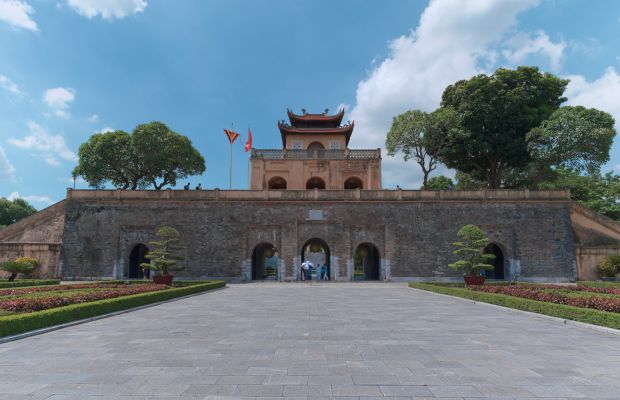Exploring the top 07 historical landmarks in Hanoi - Handspan Travel Indochina
2Hanoi, the capital of Vietnam, is Vietnam's political, economic, and educational center. The city is also a place that preserves many cultural values, customs, and history of Vietnam. It is home to many historical landmarks that have witnessed many ups and downs in history and many glorious victories of Vietnam during wartime. The city impresses tourists with its ancient beauty and timeless historical and cultural values. Let’s explore the top 07 historical landmarks in Hanoi with Handspan Travel Indochina!
You will find detailed information about these spots below in this blog post.
Imperial Citadel of Thang Long
- Address: 19C Hoang Dieu, Dien Bien Ward, Ba Dinh District, Hanoi, Vietnam
- Opening hours: 08.00 a.m. - 05.00 p.m.
- Entrance fee: VND 70,000
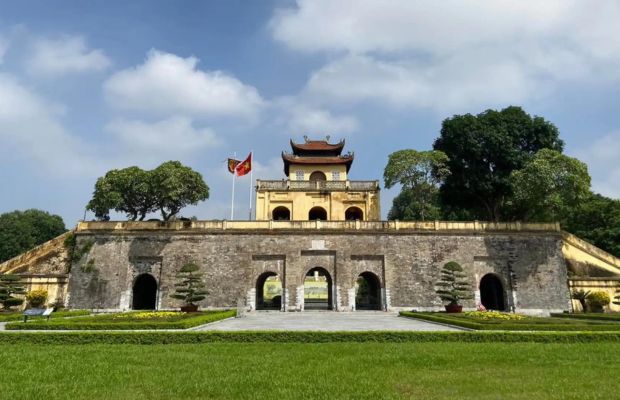
The Imperial Citadel of Thang Long
The Imperial Citadel of Thang Long, a UNESCO Heritage Site of Vietnam, is one of the historical landmarks you should visit. This massive architectural work was built in many historical periods by the Ly, Tran, and Le Dynasties of Vietnam. It has become an important monument in the system of Vietnamese heritage. On August 1, 2010, UNESCO recognized it as a World Cultural Heritage. Undergoing many upheavals, the ancient capital of Thang Long’s remaining relics still contain great historical and cultural values. Let’s see some amazing things to do in the Imperial Citadel of Thang Long.
Exploring unique works in the Thang Long Imperial Citadel relic site
The Imperial Citadel of Thang Long includes many unique architectural works. Each work is imbued with ancient, majestic beauty and long-standing historical stories. Below are some outstanding constructions here.
- Doan Mon: the main gate in the South leading to the King Thien Palace and other palaces of the king, having a U-shape structure with 5 arched doors
- Kinh Thien Palace: the place to hold ceremonies, welcome envoys, and hold court, impressive with its wooden architecture and 8-roof overlapping style with curved corners
- The North Gate: the only remaining gate of Hanoi Citadel, built by the Nguyen Dynasty in 1805
Doan Mon
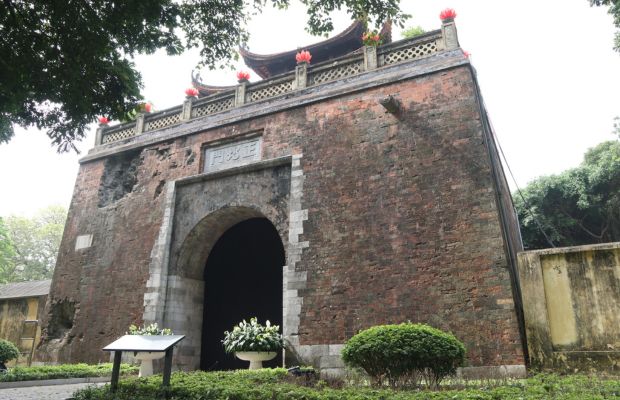
The North Gate
Experiencing the night tour “Decoding the Imperial Citadel of Thang Long”
The night tour “Decoding the Imperial Citadel of Thang Long” starts at 7 p.m. and lasts about 1.5 hours. Joining the night tour, you will have a chance to visualize a part of the history of Thang Long Imperial Citadel spanning from the 7th to the 19th century, throughout the Dai La, Ly, Tran, Mac Le, and Nguyen Dynasties.
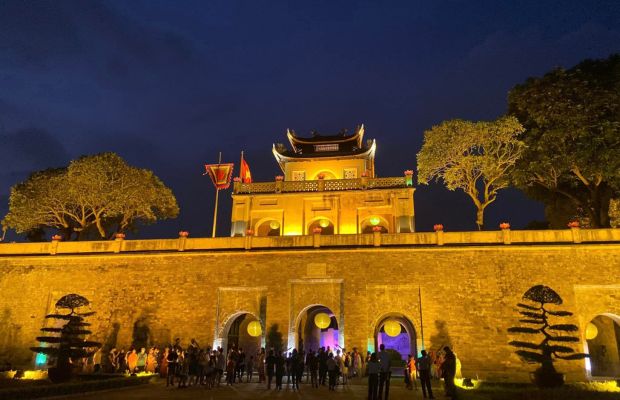
The night tour "Decoding the Imperial Citadel of Thang Long"
- Visiting the Thang Long Imperial Citadel archaeological site
The Thang Long Imperial Citadel archaeological site is located about 100 meters west of Kinh Thien Palace. There are 4 main areas with layers of relics preserved throughout the ages in this area.
Overall, the Imperial Citadel of Thang Long is among the must-visit historical landmarks in Hanoi. Let’s come here and explore this large relic site with many archaeological relics, architecture, and beautiful landscapes on your own!
Hanoi flagpole
- Address: 28A Dien Bien Phu Street, Ba Dinh District, Hanoi, Vietnam
- Opening hours: 09.00 a.m. - 05.00 p.m.
- Entrance fee: VND 20,000
The Hanoi flagpole is one of the special historical landmarks in Hanoi, witnessing the resilience and indomitability of the local people during the war against the French. Built in the 19th century, after more than 200 years, this construction still exists solidly and majestically in the center of Hanoi. During the war, the flag tower is an observation tower for the inner and outer city areas. With a total height of 41.4m (including the flagpole), the Hanoi flagpole can be easily seen from afar. The flagpole has a structure of three base floors and one tower. There is a spiral staircase connecting the floors.
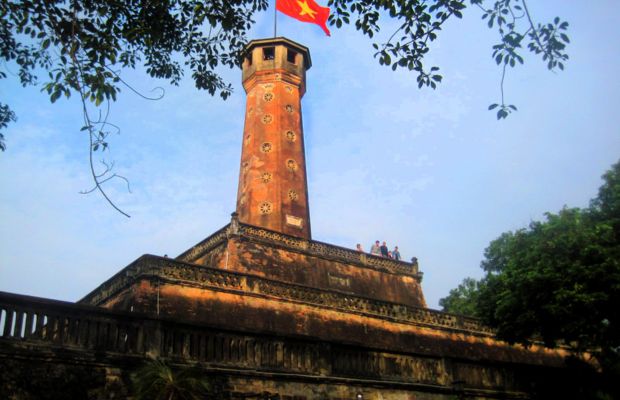
Hanoi flagpole
Standing at the flagpole, you can easily see the Vietnam Military History Museum’s tanks, helicopter, etc., as the flagpole is located on the museum campus. Besides, this is the ideal spot to see famous attractions in Hanoi. They are the Doan Mon, Princess Palace, and North Gate in the North, Hoan Kiem Lake in the East, Ho Chi Minh Mausoleum and Ba Dinh Square in the West, and many other works in the South.
Temple of Literature (Van Mieu - Quoc Tu Giam)
- Address: 58 Quoc Tu Giam Street, Van Mieu, Dong Da, Hanoi
- Opening hours: 08.00 a.m. - 04.30 p.m.
- Entrance fee: VND 70,000

Hanoi Temple of Literature night tour
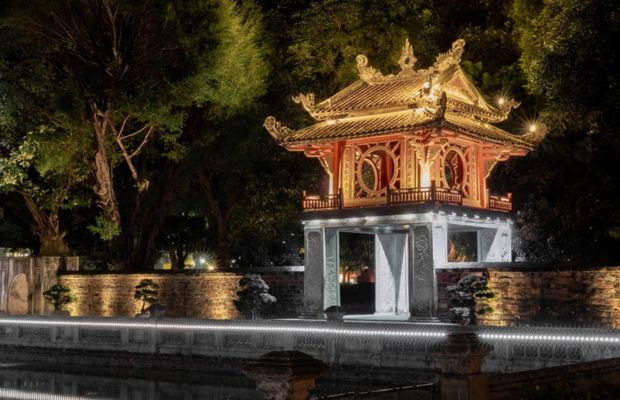
Khue Van Cac at night
Known as the first university in Vietnam, the Temple of Literature is also one of the historical landmarks in Hanoi that you should visit. It was built in 1070 by Emperor Ly Thanh Tong to serve as a learning center in Vietnam.
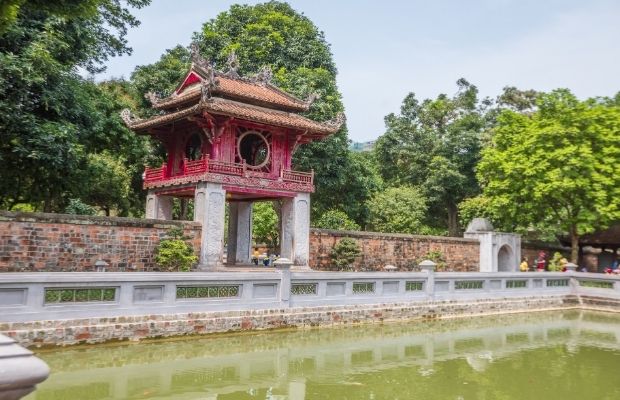
Khue Van Cac at the Hanoi Temple of Literature
Coming to the Temple of Literature, you will have a chance to visit the architectural works and learn about the unique architecture here. There are five distinct areas inside, each zone has separate walls and gates linked together and different functions.
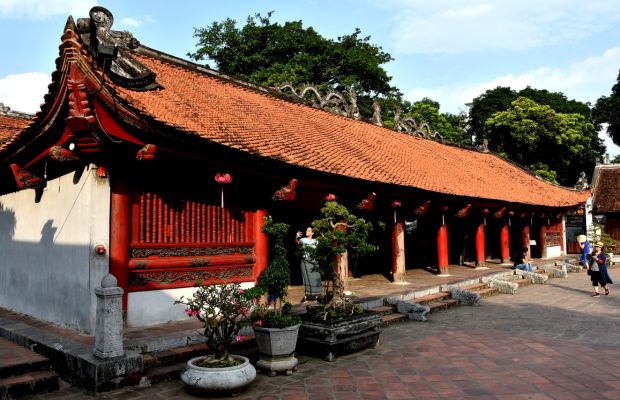
The center of the Hanoi Temple of Literature
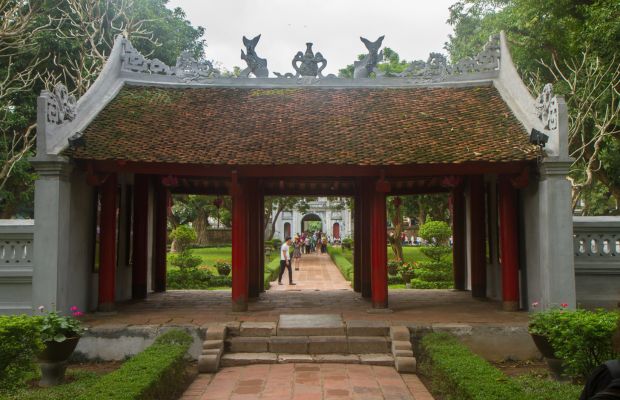
The gate to the second courtyard inside Hanoi Temple of Literature
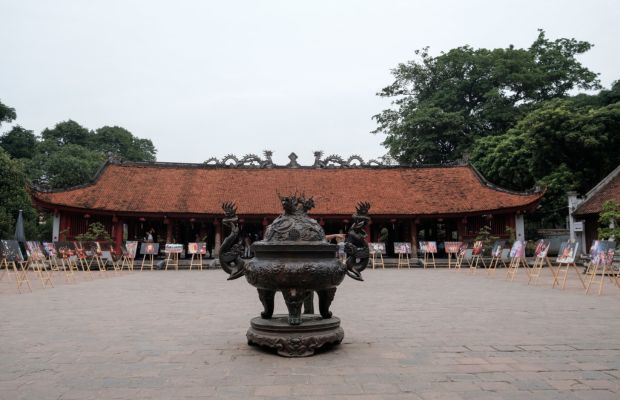
The fifth courtyard inside the Hanoi Temple of Literature
Today, Van Mieu - Quoc Tu Giam is also the place to organize poetry festivals and praise excellent students. It is also a famous tourist spot attracting a large number of domestic and international tourists. Simultaneously, Van Mieu is the meeting place "asking for words" of Vietnamese in traditional Tet holidays with the wish of a peaceful or prosperous new year, especially for students before essential exams.

Hanoi Temple of Literature night tour

Khue Van Cac at night
Especially on Wednesday, Friday, Saturday, and Sunday, you can enjoy the Van Mieu Night Tour (VND 199,000 per person). Joining the night tour, you will see the space of Van Mieu - Quoc Tu Giam expressed through impressive lighting art and a sophisticated sound system.
Hoa Lo Prison
- Address: 01 Hoa Lo, Tran Hung Dao, Hoan Kiem, Hanoi
- Opening hours: 08.00 a.m. - 05.00 p.m.
- Entrance fee: VND 50,000
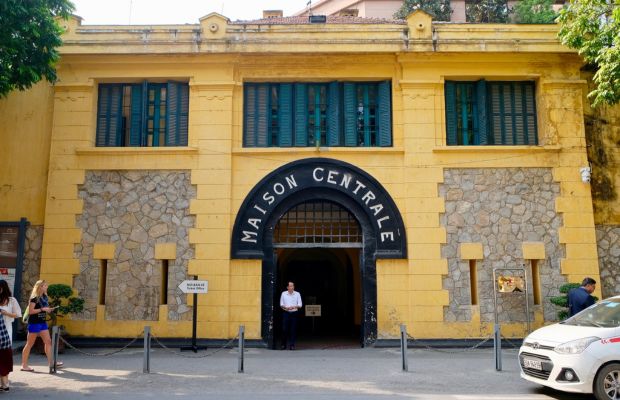
Hoa Lo Prison
Hoa Lo Prison is also among the historical landmarks in Hanoi which has witnessed a period of arduous history, symbolizing patriotic Vietnamese's indomitable and resilient spirit. It was built in 1896 by France to detain political prisoners and patriots opposing the colonial government. If you would like to learn more about the history of Vietnam during the fight for independence, Hoa Lo Prison is an ideal choice.
Visiting the Hoa Lo Prison, you will have a chance to learn about the ways prisoners were brutally tortured and the weapons used for torturing. Especially, you can see the guillotine which puts the prison in the top 10 most notorious prisons in the world. Besides, the prison also impresses you with the Cachot (dungeon area), which has an area of only 4 square meters. This place has no light and lacks air.
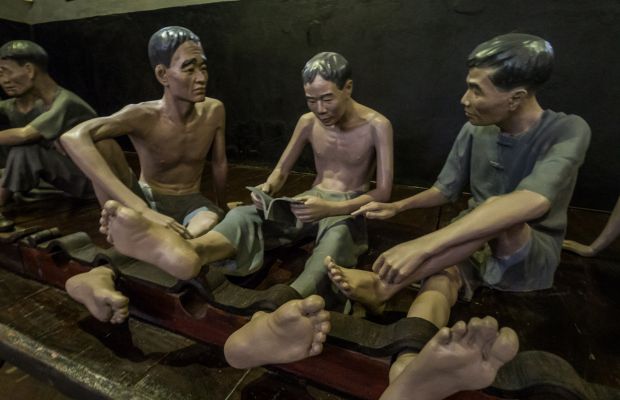
Prisoners in Hoa Lo Prison
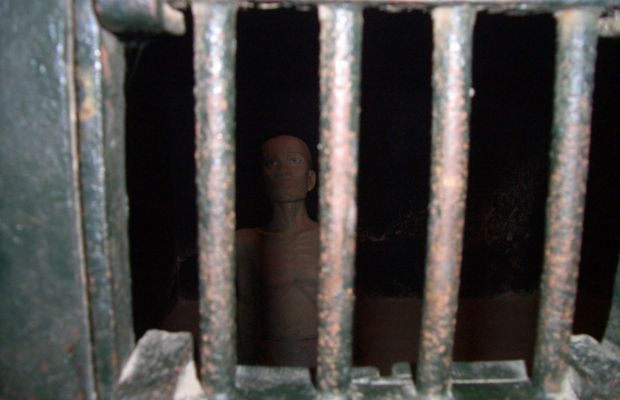
Cachot in Hoa Lo Prison
Coming to the Hoa Lo Prison, you can choose to take a day tour or a night tour depending on your preferences and schedule. If you visit the prison in the daytime, you can rent a walkie-talkie with headphones to listen to explanations about the prison. Besides, there are also informational signs with English subtitles in each gallery and each item for you to have overall information on Hoa Lo Prison. If you choose to take the night tour, it will cost you VND 300,000 to enjoy the realistic and vivid experience of the heroic struggle of the soldiers who heroically sacrificed their lives during the war.
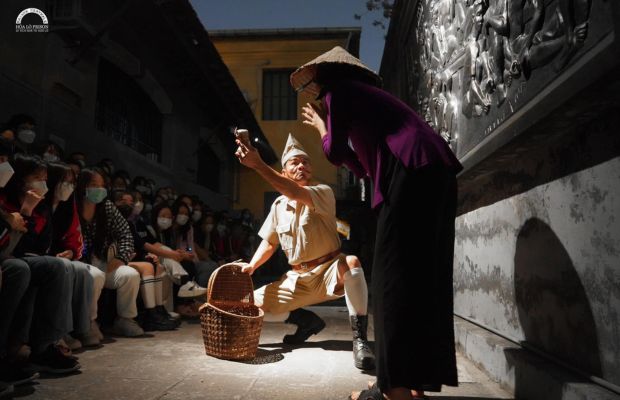
Hoa Lo Prison night tour
One Pillar Pagoda (Mot Cot Pagoda)
- Address: Chua Mot Cot, Doi Can, Ba Dinh, Hanoi
- Opening hours: 07.00 a.m. - 06.00 p.m.
One Pillar Pagoda is not only a unique art architecture in Vietnam but also among spiritual destinations and historical landmarks in Hanoi. The pagoda impresses tourists with its Vietnamese cultural traditional architecture, with a curved tiled roof at 4 corners and two dragons on the top of the roof. Each of the details brings many interesting discoveries for visitors when visiting.
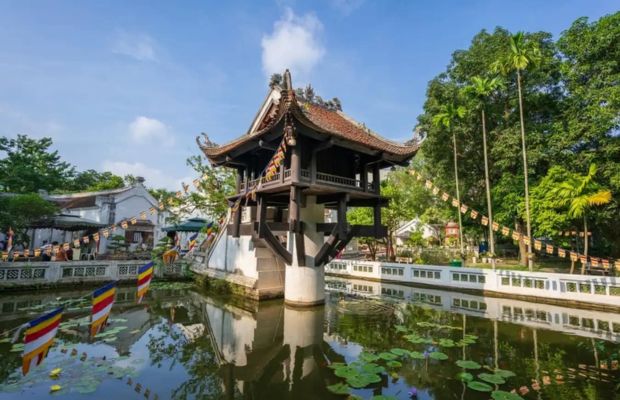
One Pillar Pagoda
In front of the pagoda, you can find the Tam Quan gate with three arched entrances, including a large entrance in the middle and two small entrances on either side. This design is the typical design for traditional religious architecture in Vietnam. Stepping foot inside the pagoda, you will feel more impressed with its design and arrangement.
Let’s come to One Pillar Pagoda and learn about the pagoda’s architecture yourself!
Tran Quoc Pagoda
- Address: 46 Thanh Nien Street, Yen Phu Ward, Tay Ho District, Hanoi
- Opening hours: 07.30 a.m. - 11.30 a.m. & 01.30 p.m. - 05.30 p.m.
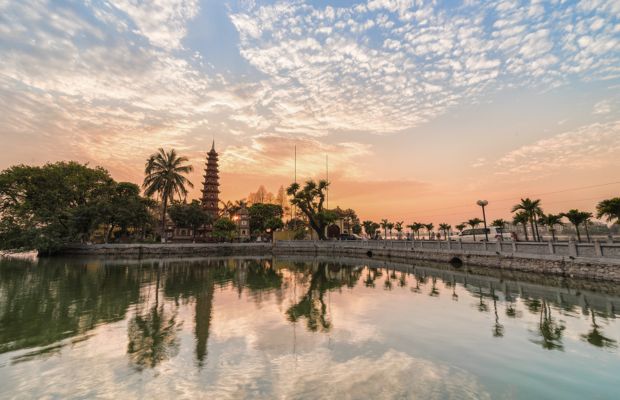
Tran Quoc Pagoda
With an age of up to 1500 years, Tran Quoc Pagoda is one of the most ancient pagodas in Vietnam and is among the historical landmarks in Hanoi. With its prime location, long history, and unique architecture, Tran Quoc Pagoda has become an attractive destination in Hanoi, attracting both domestic and foreign tourists. As one of the most beautiful pagodas in Vietnam, Tran Quoc Pagoda impresses tourists through its unique ancient architecture. Although the pagoda has undergone many restorations, it still retains its pure Buddhist architectural and structural principles. Let’s explore some outstanding architectural works inside the pagoda!
- Stupa – Nine-level lotus flower
The six-degree lotus stupa was built between 1998 and 2003, creating a tower garden for the pagoda. The Stupa has 11 floors, with an area of about 10.5 square meters. Inside the Stupa there is an Amitabha Buddha statue made from precious stones and about 66 other statues. There is a 9-storey lotus throne above the stupa, which is a work of bold aesthetics, retaining the flexibility of the overall architecture while adding majesty and splendor.
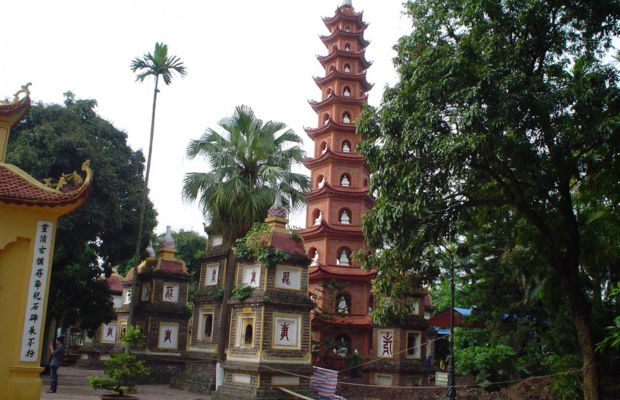
Stupa – Nine-level lotus flower
- The Front Hall
The front hall of the pagoda was built in the west, and behind is the Tam Dao House. Two corridors on both sides are the Upper Palace and the Incense Burning House. The front hall places many statues of Buddha and Quan Cong. Among them, the most prominent is the wooden statue of Shakyamuni Buddha. In addition, in the Front Hall, there are many other precious bronze Buddha statues.
- Upper Palace
The Upper Palace is also a spot you should not miss when visiting Tran Quoc Pagoda. Behind the Upper Palace, there is a bell tower built into a 3-compartment house. The building is built of wood and has a red fish-scale tiled roof, giving it a characteristic ancient look.
Tran Quoc Pagoda is among the outstanding historical landmarks in Hanoi and a symbol of the eternal history and spiritual culture of the people in Hanoi. Through many events, ups and downs, this place will still be the ideal destination in your journey in Hanoi.
Four guarding temples of Thang Long (Thang Long Tu Tran)
Four guarding temples of Thang Long are 4 temples guarding 4 sides of Hanoi. Not only are they a special national monument, but the four temples are also a destination to offer incense and pray for peace. They are also among the historical landmarks in Hanoi that have witnessed many events of Hanoi. These four temples include Bach Ma Temple in the East, Voi Phuc Temple in the West, Kim Lien Temple in the South, and Quan Thanh Temple in the North. Let’s explore each temple with us!
Bach Ma Temple
- Address: 76 Hang Buom Street, Hang Buom Ward, Hoan Kiem District, Hanoi
- Opening hours: 09.00 a.m. - 05.30 p.m.
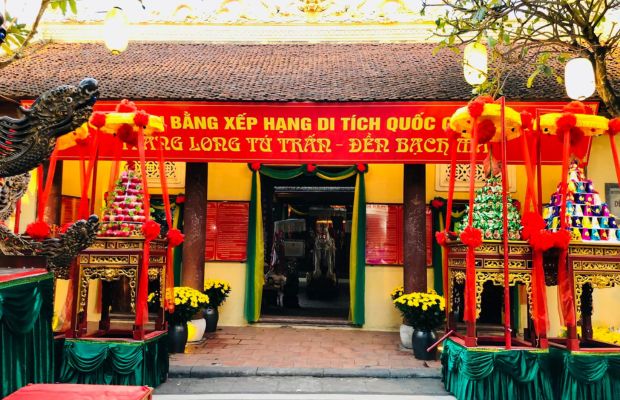
Bach Ma Temple
Bach Ma Temple is a long-standing ancient temple and is among the historical landmarks in Hanoi. The temple worships the god Long Do, the tutelary god of Thang Long Citadel. The temple was built in the 9th century, with typical architecture of the Nguyen Dynasty. The temple’s constructions include a Tam Quan area, a yard, a communal house, an incense burner, a forbidden palace, and a council house. The Tam Quan area has 5 compartments. The communal house was built in a two-storey architecture with eight curved roofs.
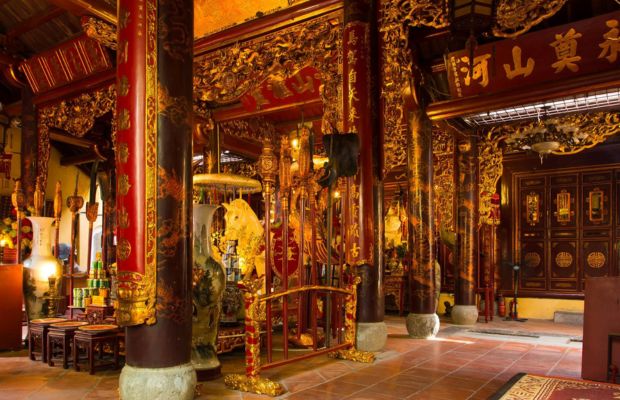
Inside the Bach Ma Temple
Currently, the temple still preserves many valuable relics. Typically, there are 15 stone steles recording the temple's history, rituals, and restorations. Besides, there are ancient weapons, bronze incense burners, bronze tops, statues, etc., exquisitely carved.
Voi Phuc Temple
- Address: 362 Kim Ma Street, Ngoc Khanh Ward, Ba Dinh District, Hanoi
- Opening hours: 08.00 a.m. - 05.00 p.m.
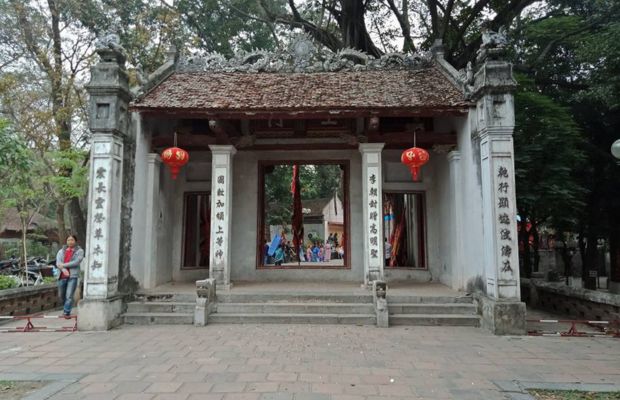
Voi Phuc Temple
Voi Phuc Temple is also one of the historical landmarks in Hanoi and one of the temples in the four guarding temples of Thang Long. Despite experiencing many historical upheavals, the temple still retains many precious relics. Coming to the temple, you will be amazed at the quiet, ancient architecture here. There are three ways to enter the temple yard. The middle path with 12 wide stone steps is only used when carrying palanquins during holidays, while the two paths on both sides are for traveling. The temple’s roof has the traditional architecture of ancient pagodas with a curved tail and the top is carved with delicate curving dragons, phoenixes, unicorns, tigers, and dragon pearls. The main hall of the temple has 5 compartments displaying weapons.
Kim Lien Temple
- Address: 148 Kim Hoa Street, Phuong Lien Ward, Dong Da District, Hanoi
- Opening hours: all-day
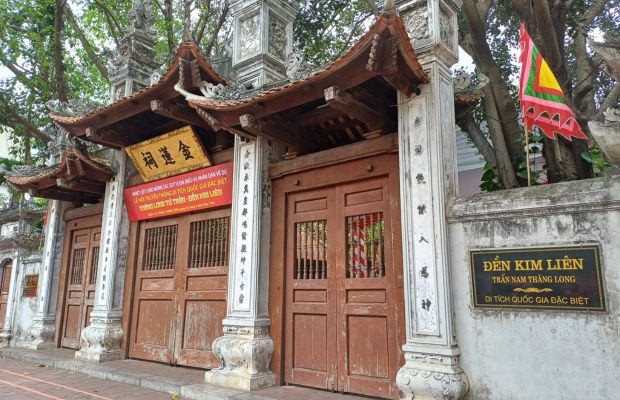
Kim Lien Temple
Kim Lien Temple is also one of the four guarding temples of Thang Long, and it was recognized as a national historical and cultural relic in 1990. The architecture of the communal house consists of two parts. The front part of the mound has a pillar gate, and two rows of ceilings on both sides of a large brickyard, and the main architectural part of the monument is located on a high mound. Going to the end of the yard, you will pass through nine high brick steps built with large-sized mallet bricks.
Besides impressive architecture, this temple also preserves many relics, such as 33 identities conferred by the Le and Nguyen dynasties, the stone stele called "Cao Son Dai Vuong Than of Compassion", etc., with high historical value.
Quan Thanh Temple
- Address: 190 Quan Thanh Street, Quan Thanh Ward, Ba Dinh District, Hanoi
- Opening hours: 08.00 a.m. - 05.00 p.m.
- Entrance fee: VND 10,000
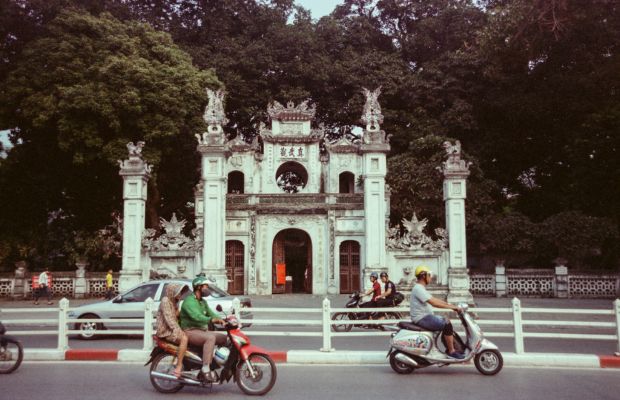
Quan Thanh Temple
Quan Thanh Temple is also among the historical landmarks in Hanoi that you should drop by. The temple is built in traditional Chinese architecture with a three-entrance gate, the front palace, the middle palace, the worshiping yard, and the behind palace. The outer gate is impressive with four pillars. Around the four pillars are outstanding details like fish, dragons, tigers, and couplets, creating the temple’s majesty and antiquity. The temple’s three-entrance gate includes three doors and two floors. The middle gate embossed the statue of Rahu, an Indian god. The yard is the place to arrange and display offerings. There are two large incense burners and a table to prepare offerings here. Besides the bronze statue of Huyen Thien Tran Vu, the temple also possesses many valuable works of art exquisitely carved on doors, columns, beams, horizontal panels, and parallel sentences written in Chinese characters.
Overall, the four guarding temples of Thang Long are not only outstanding historical landmarks in Hanoi but also symbols of the spiritual and cultural life of Vietnamese people. Let’s visit these temples and learn more about the history and culture of Hanoi!
In conclusion, you have just learned about the most noticeable historical landmarks in Hanoi. Hope that these pieces of information will be helpful for you. For booking an available tour package in Hanoi or tailoring your own itinerary, please do not hesitate to contact our team.
__logo.png)
__hanoi-water-puppets.jpg)
__angkor-wat-blue-reflections.jpg)
__vientiane-buddha-park-monks.jpg)
__bagan-dhammayazika-dusk.jpg)
